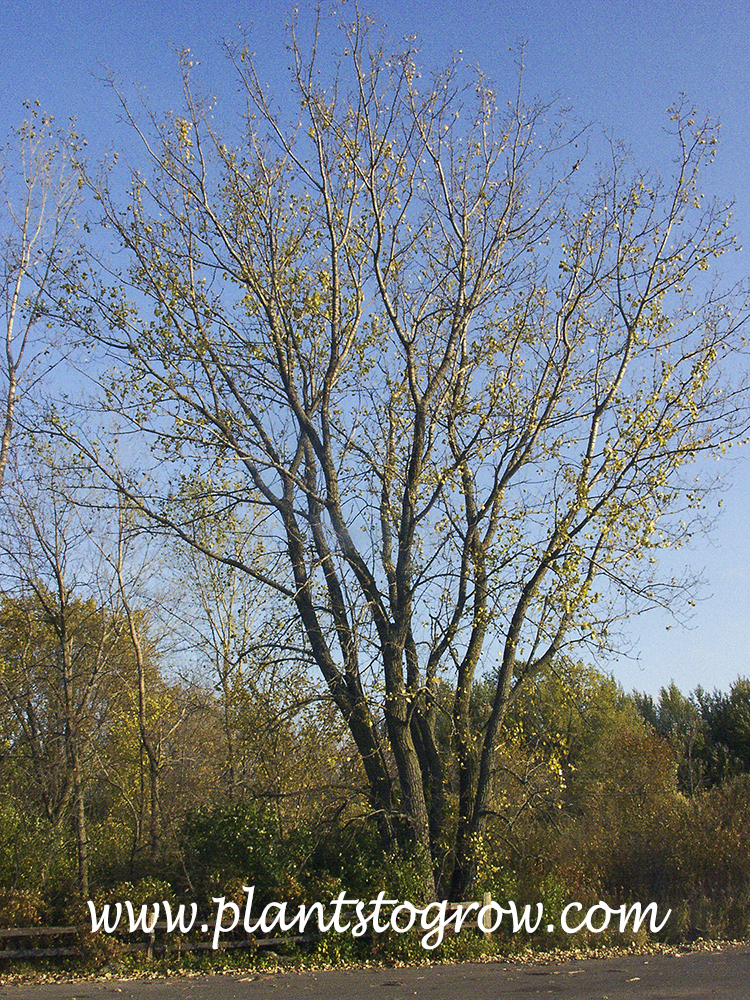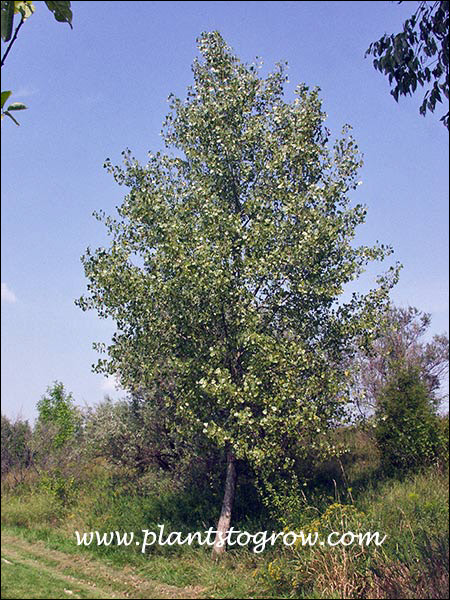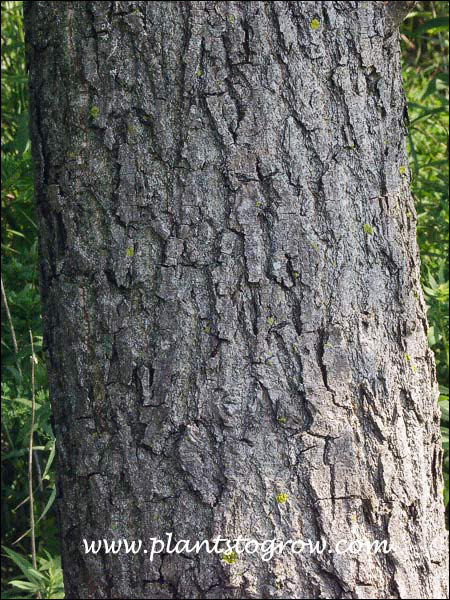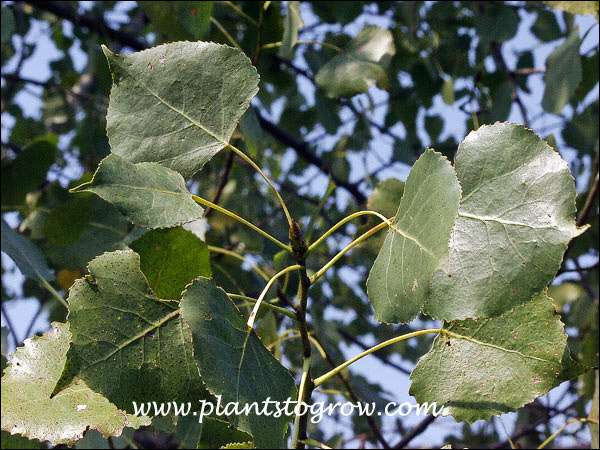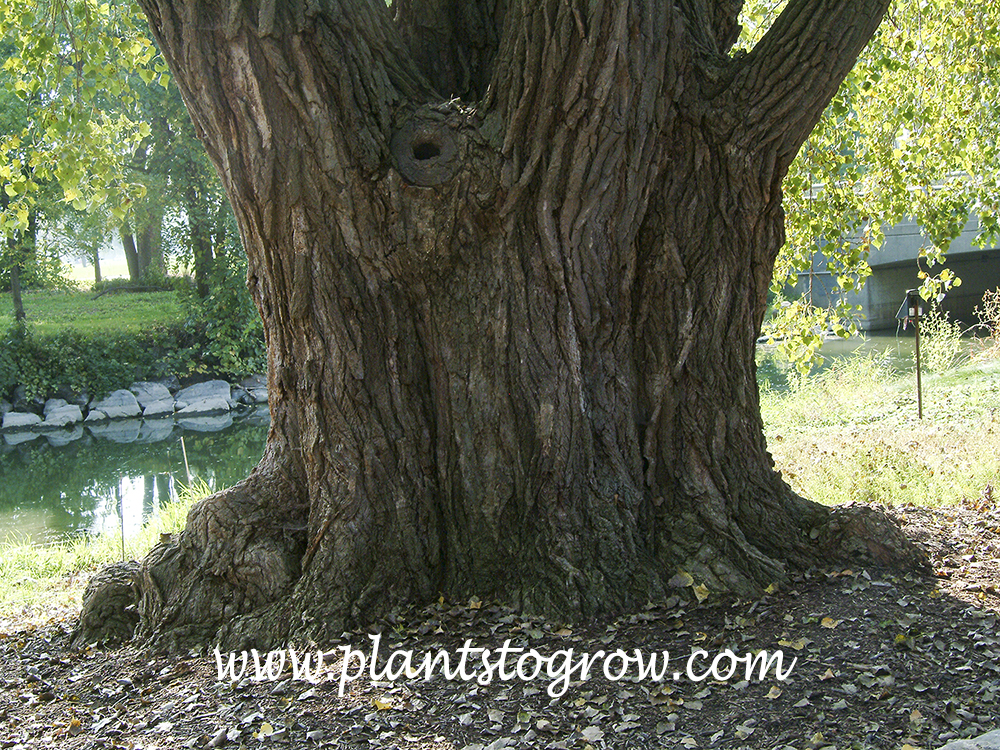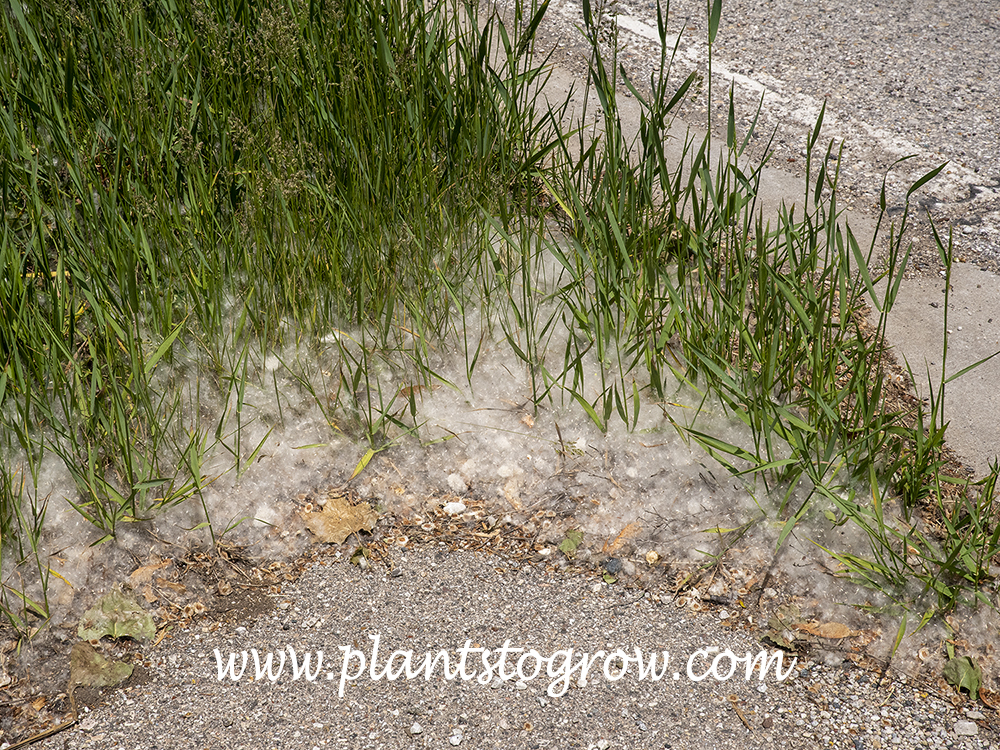| Description | Cottonwood (Populus deltoides) is a very fast-growing, short-lived tree. Its messy habit of producing large amounts of catkins has caused it to become outlawed in many communities. |
|---|---|
| Plant Type | Trees Deciduous, Site author's observations |
| Hardiness Zone | 3a-9 |
| Sunlight | full |
| Moisture | prefers moist, tolerates drier |
| Soil & Site | prefers moist, tolerates drier, tolerates some flooding |
| Flowers | dioecious (separate male and female plants), anemophilous (wind-pollinated), female plant produces the cottony catkins in large amounts on bare stems, male plants are catkin free |
| Fruit | On a long catkin, there are green, egg-shaped capsules that split into 3 or 4 parts and release cotton-like seeds. |
| Leaves | simple, alternate, medium green, deltoid shape, 3-6" long and have wavy teeth, fall color not dependable but may be turn yellow, buds are brownish and sticky |
| Stems | Bark greenish yellow on young plants, gray and furrowed on older stems. The bark contains salicin, which is similar to Asprin. |
| Dimensions | Reaches 75-100' tall by 50-60' spread, can grow 4-5' per year, short lived |
| Maintenance | Very messy, constantly dropping dead twigs and branches. Large branches have a tendency to break off, especially during heavy snowfall. |
| Propagation | By seeds or simply sticking a branch in the soil and it will root. Cut down Cottonwoods will resprout. |
| Misc Facts | According to legend, an Indian discovered the conical shape of a teepee by twisting a Cottonwood leaf around his finger. AKA: Cottonwood, Eastern Cottonwood, Popple, necklace popular, aspen cottonwood, water popular, river popular, yellow cottonwood, plains cottonwood, southern popular, eastern popular |
| Author's Notes | The cottony catkins are produced in such large amounts that they clog drains, swimming pools, etc. I have seen areas where the catkins have created snowfall landscapes in the spring. If you want to use this plant, use a cottonless cultivar. Many animals eat the buds of this plant, and the dead and dying trees provide a home for many birds. Female plants are illegal to plant in many areas. In my yard, we have two large, old cottonwood trees that are highly susceptible to ice damage. |
| Notes & Reference | #01-Manual of Woody Landscape Plants (Michael Dirr), #39-The Natural History of Trees (Donald Cultrose Pattie), #66-Trees of Eastern and North central USA and Canada (Harlow), #274-Site Authors' observations and growing experiences, #281- Folklore of Trees and Shrubs (Laura C. Martin) |

Cart
